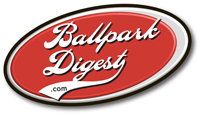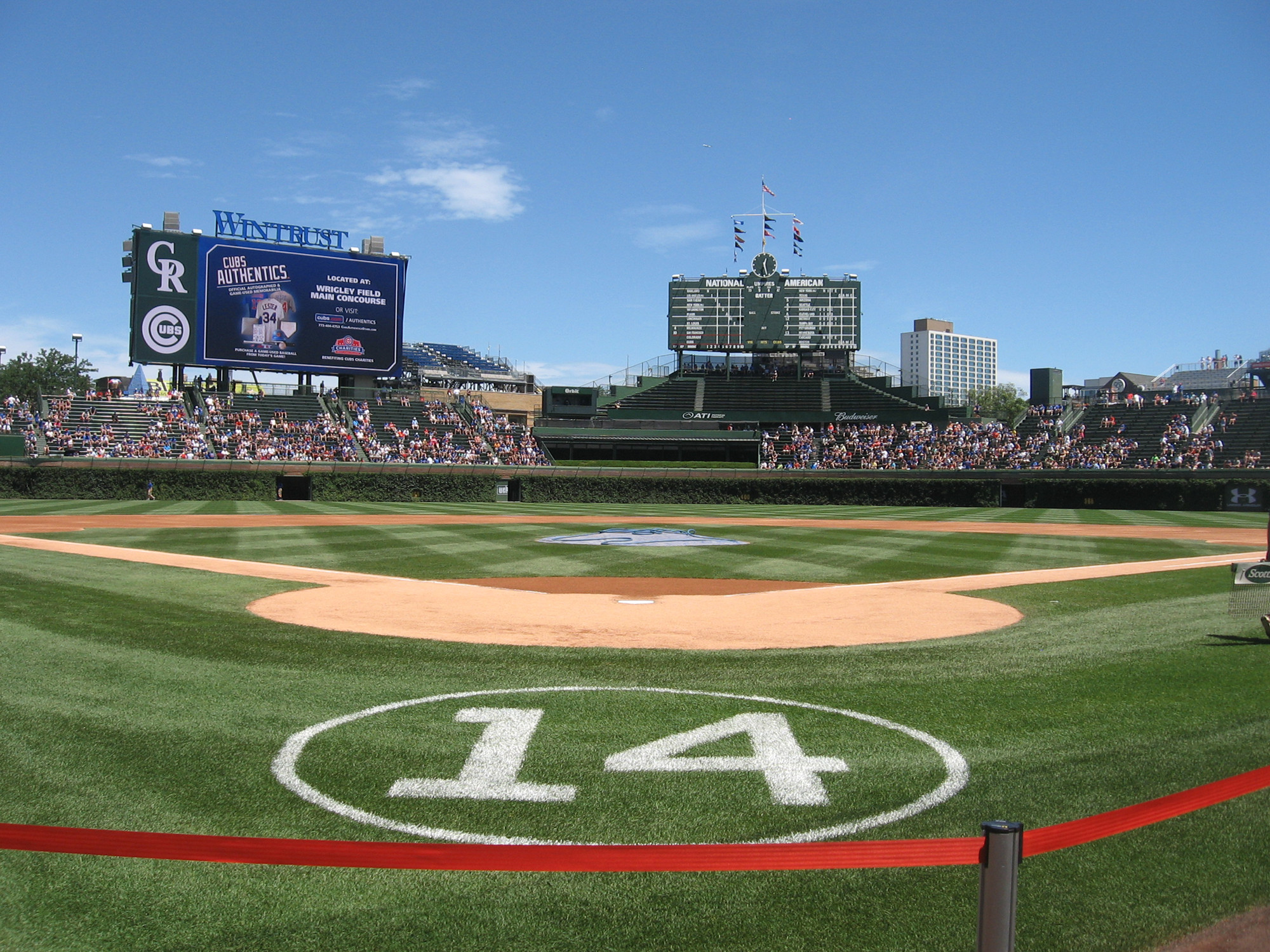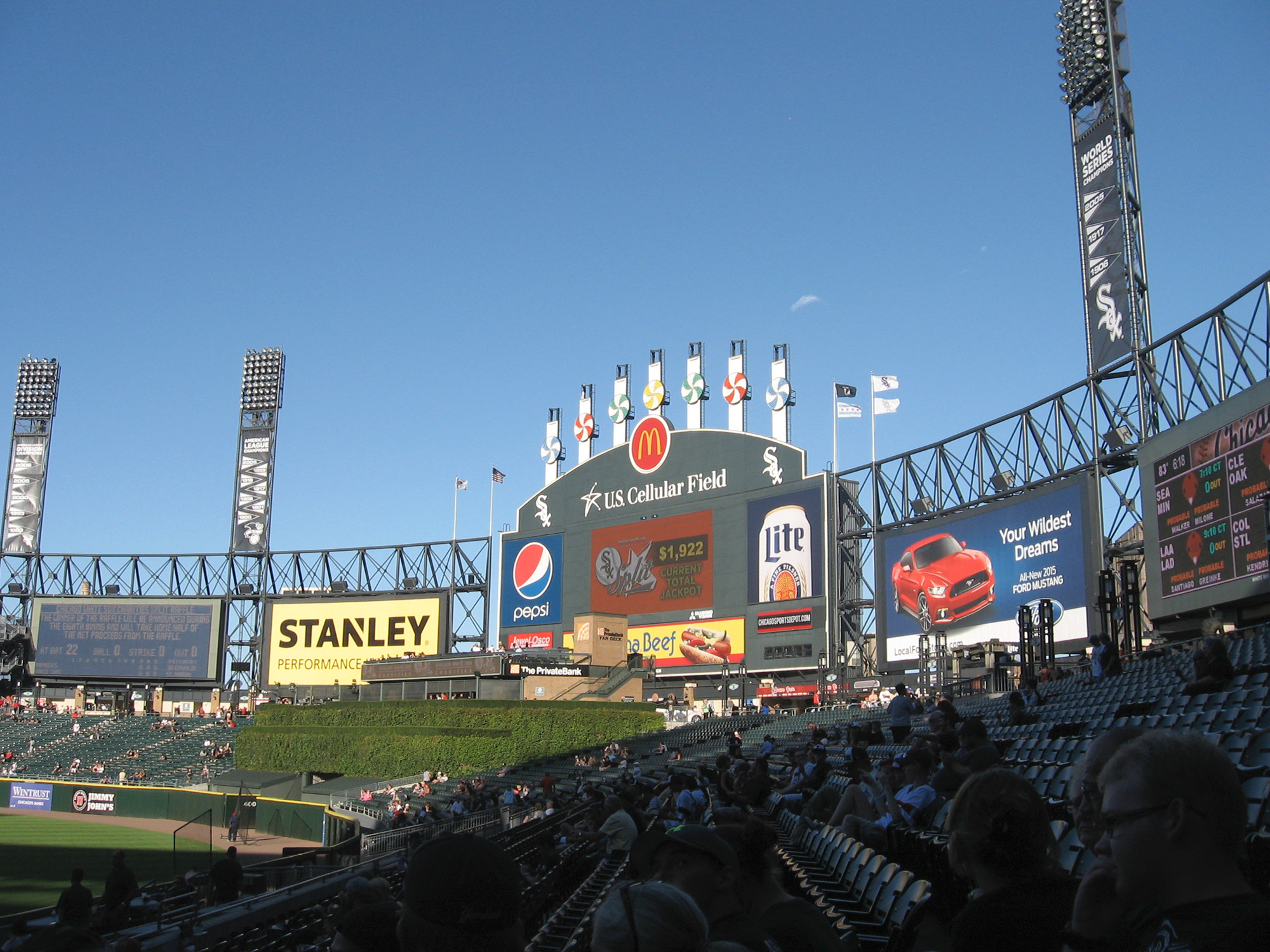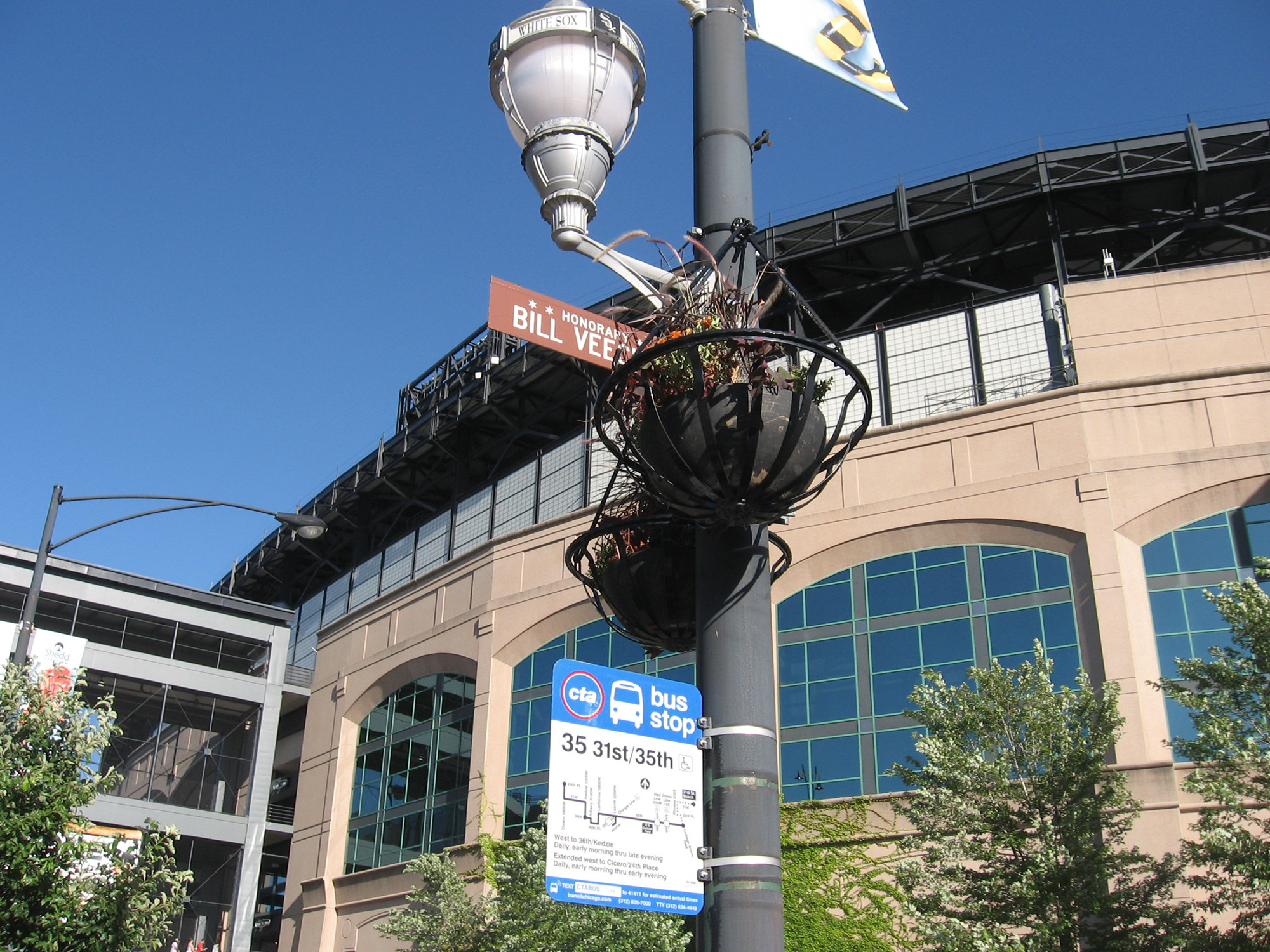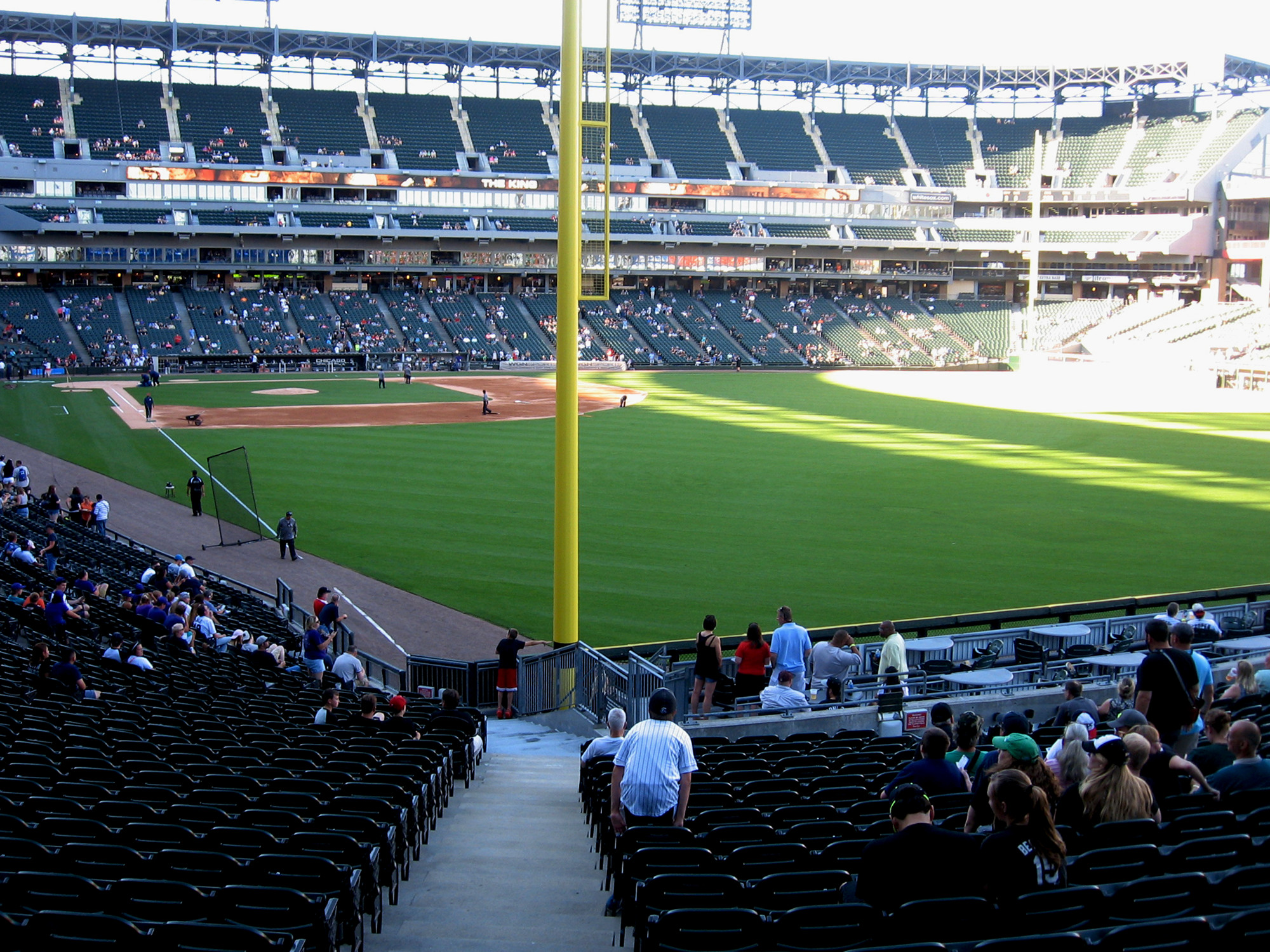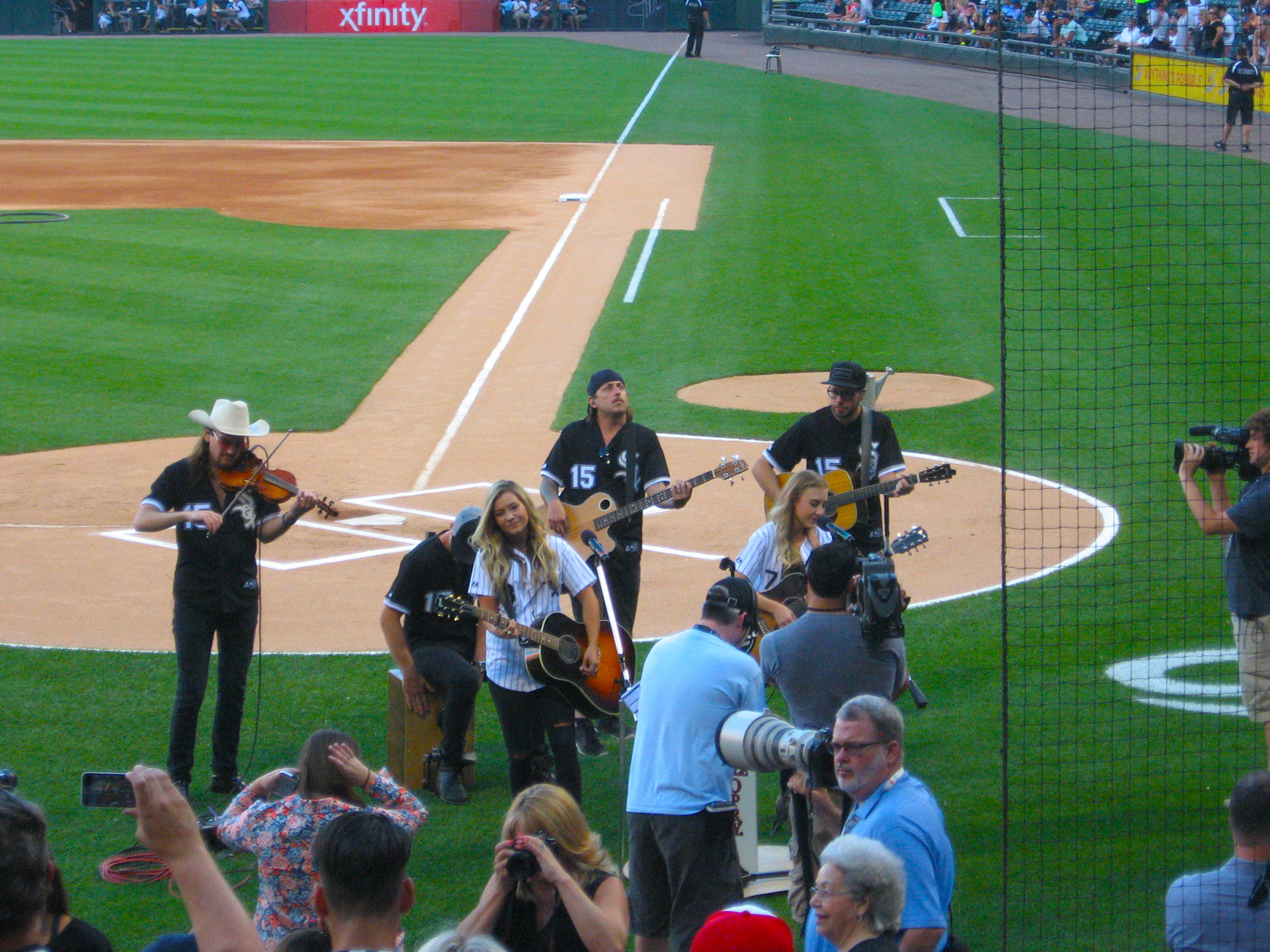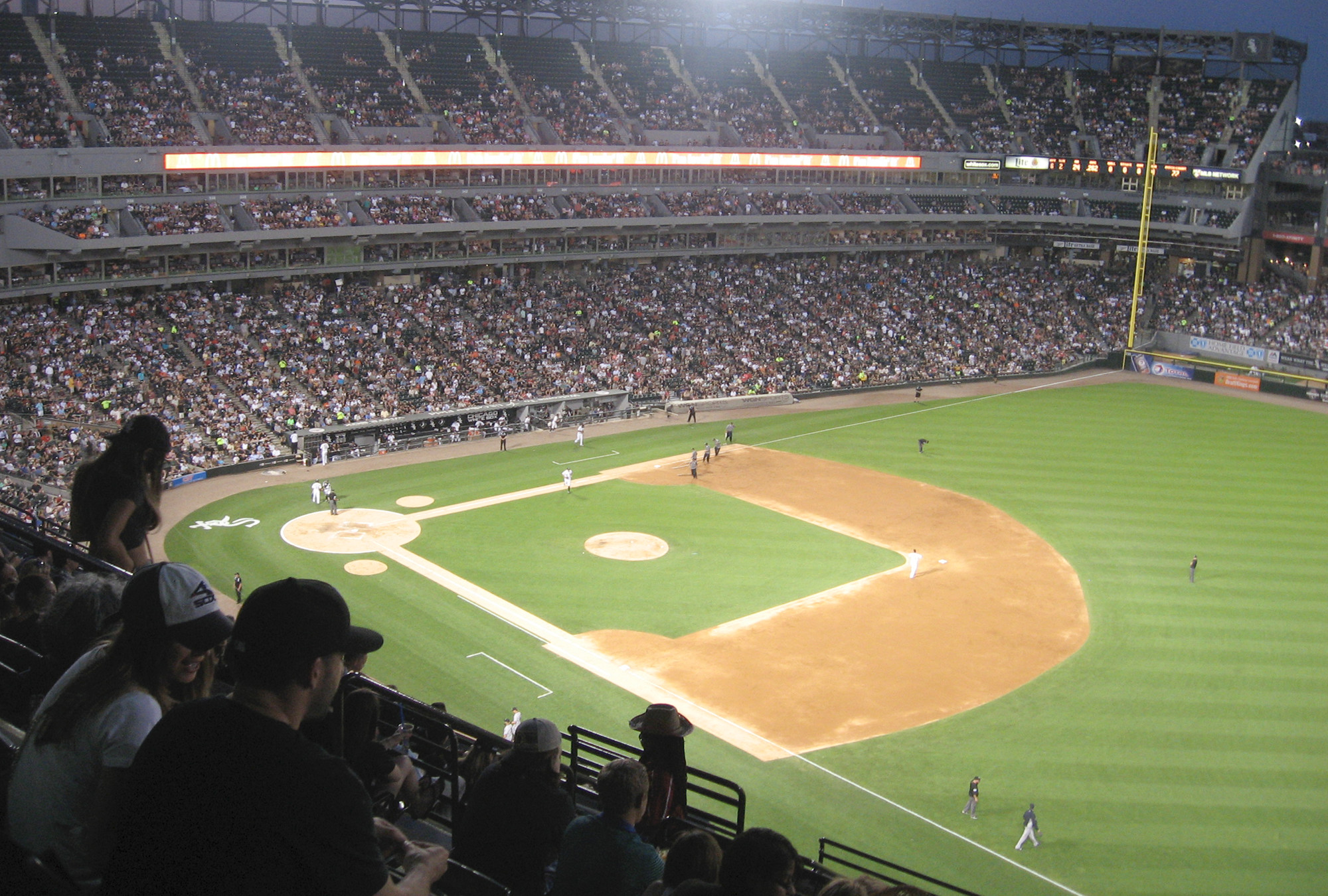Editor’s Note: Mark Cryan, former MiLB general manager and Ballpark Digest contributing editor, embarked on an epic ballpark tour this summer, and he filed regular dispatches from the road. Today’s stop: Wrigley Field and U.S. Cellular Field.
“Is This Heaven?” “No, Son, It’s Wrigley.”
What can I say that hasn’t been said before about one of the most storied places in baseball history? In my humble opinion, Wrigley is only rivaled by Fenway Park, and despite my late father’s love for the Red Sox, I have to say I enjoy visiting Wrigley even more. The fans are into the game, but they don’t live and die with every pitch. Red Sox games are fantastic, one-of-a-kind experience, but they are also an exhausting roller-coaster ride of emotion, where a Cubs game is an enjoyable day in the sun, win or lose.
Making a Memory
To share a day game at Wrigley with my son was a major goal of this trip. It’s also something I will wager that neither of us will ever forget. The weather was perfect; we were in the shade in the upper deck. It was a near-capacity crowd, but we settled into a group of seats at the front edge of the upper deck (including our own two seats and four unoccupied seats around us), and watched Jon Lester hang 14 strikeouts on the Colorado Rockies.
We also saw former Burlington Indian Aaron Laffey pitch for the Rocks, a nostalgic treat for this old Burlington Indians GM. Beyond the game, there is the ivy, the hustle and bustle outside the ballpark, and the statue of Ernie Banks. Flags fly in the breeze above the wooden roof. The slim steel girders improbably hold up the entire upper deck, like they have for over 90 years. Catwalks and ramps angle past I-beams and the odd angles and unlikely seat locations yield surprisingly good views of the game.
Massive new videoboards in the outfield have rendered many of the rooftop bleachers obsolete; they were lightly filled on the day we were there. While I love the concept of a pro team as a public trust, I really never understood why the Cubs stood by while people essentially stole their product by selling rooftop seats. The team eventually got into this business themselves, and in recent years they were getting a share of the rooftop revenues, but the videoboards are an absolute necessity if you are going to keep people’s attention in the current era. Construction also continues on the corner lot outside the third-base side of the ballpark, adding more team offices, function space, and more.
Even with all these changes, purists don’t need to worry — it’s still Wrigley. The L-Train rumbles behind the wall while the standings are displayed in the ultimate low-tech mode: team flags running up a flag pole. Fancy new video montages grace the videoboard, but the fans still throw back the other team’s home runs. You can still see the out-of-town scores posted manually, and the “W” flag goes up when the Cubbies win.
A Post-Game Treat
I love the McDonald’s across the street from Wrigley. Still hungry, but didn’t want to spend for another ballpark dog? Stop at Mickey D’s after the game. Had a long walk to get there? Stop in before the game, use the bathroom, use the wifi, watch the ballpark crowd stream by outside the windows. Of course, it’s only right to buy some food, too. It’s like a little oasis.
One of the other reasons that I like Wrigley? Is relatively easy to park. On every visit, I’ve been able to find parking on the street just a few blocks from the park. Of course, my earlier visits to Wrigley included some lengthy pub crawls through Wrigleyville, so the walk was not an inconvenience. On this visit with my son, we skipped the pub crawl, and we were able to park about six blocks away.
We also had a nice surprise before the game. We had bought cheap seats, but unlike some parks, you can still roam all areas of Wrigley, regardless of where your seats are. As we walked the concourse behind home plate, an usher stopped us, asked Ty how old he was, and then stuck a Cubs sticker on this shirt. “You want to go on the field?” He directed Ty down to the gate next to the dugout, where he was able to walk out into roped off area on the warning track behind home plate while the teams warmed up. He was all smiles. Thanks, Cubs, for making our visit to baseball nirvana even better.
U.S. Cellular Field – Chicago White Sox
I’m sorry, U.S. Cellular Field. It’s not you, it’s me! The problem with U.S. Cellular Field has nothing to do with U.S. Cellular Field. It’s the fact this this perfectly serviceable big-league ballpark is in the same city as the nearly perfect Wrigley Field. How can you avoid comparing them? My top piece of advice for anyone planning a baseball visit to Chicago? Be sure to visit the White Sox first.
In fairness, U.S. Cellular Field is a nice place to watch a game. The sightlines are good, the upper deck in particular has wide-open concourses with lots of concessions windows, and a train station services the ballpark. The dominant color is black, and there is lots of concrete, in stark contrast with the green color and exposed brick that is the signature of the Cubs home.
In many ways, the “New Comiskey” is a victim of timing as much as it is a victim of the inevitable comparisons to Wrigley. The White Sox went through a long and difficult process to get a new ballpark funded and to clear the many political hurdles to replacing the original Comiskey Park.
The ballpark that the White Sox opened in 1991 was certainly state-of-the-art at the time, but the very next year, Oriole Park opened in Baltimore, and everything changed. The Orioles’ new park began the wave of retro ballparks that are designed to remind fans of the warm, nostalgic feeling of the old concrete-and-steel-girder ballparks, like Wrigley, Fenway, and a whole generation of parks that have gone by the wayside. Yes, like the old Comiskey.
This was my first visit to the new park, but I was fortunate enough to visit the old ballpark during its final season. On that trip, I saw Nolan Ryan pitch for the Rangers against the White Sox game in the old park with my brother, but the new ballpark was under construction right next door. The current park is much larger, and during that visit in 1990, the upper deck of the new ballpark loomed over the old park like a gigantic concrete spaceship.
Good Customer Service and a Parking Score
To their credit, the White Sox have continued to invest in the ballpark. There are lots of little architectural touches that give the park added visual interest, like brick detailing here and there, a great variety of concessions offerings, and lots of hospitality space.
There are certainly some nods to the past, like the new edition of Bill Veeck’s famous exploding scoreboard (set to be upgraded in 2016), and the shower stall relocated from the old park. It is still available to cool off fans on a hot day.
The game experience at the White Sox was excellent, starting from our ticket purchase early that morning. We were coming in from the suburbs and decided to drive to the ballpark and get our tickets first, and then figure out how we would get downtown and see the sights before that night’s game. When we pulled in around 9:30 a.m., we drove right into the main lot in front of the ballpark, parked at the end of a row of cars and walked to the ticket window, all the while waiting for someone to tell us we couldn’t park there.
The ticket sales person was very friendly, and we talked a bit about our trip and driving all the way from North Carolina to the West Coast and back. He proceeded to give us excellent advice about our ticket selection; buy the cheapest seats available in the lower deck, even if they are behind the foul pole, because with a lower-deck ticket, you can access the whole ballpark, but with an upper-deck ticket, you can’t get into the lower bowl. After we finished our transaction, he went to a cabinet at the back of the ticket office, and pulled out a White Sox youth jersey that he gave to Ty. It was a very nice gesture, and Ty wore the shirt all over the city that day.
We also realized that nobody had said anything about where we were parked, so we just walked across the street, bought two day-passes for the train, and headed into downtown. Game tickets, a youth jersey, and free parking for the day right next to the ballpark! Score!
We had a great day of sightseeing in Chicago, including a trip to the top of the Willis Tower, a ride around the original elevated train, dipping our toes into Lake Michigan at the Ohio Street Beach, lunch at the Navy Pier, and, of course, lots of selfies at “The Big Bean,” officially known as Cloud Gate, in Millennium Park.
When we returned to the ballpark that evening, we enjoyed a brief pregame concert at home plate by the country music duo Maddie & Tae, best known for their hit “Girl in a Country Song.” There was never any reason to be without a drink at the White Sox game; beer vendors seemed to come by our seats roughly every 45 seconds, and there were also several vendors selling margaritas dispensed from a backpack pump. I’m sure the cocktails were safe to drink, but I couldn’t get past the images of these same type of rigs being used to spray pesticides on fields.
Lots of Chicagoland Minor League Baseball
Of course, there is more baseball in the Chicago area. In addition to the two big-league teams, you can visit the independent Schaumburg Boomers, Gary SouthShore Railcats, Windy City Thunderbolts or the Joliet Slammers, or the affiliated Low A Kane County Cougars.
A Must
Ultimately, a visit to Chicago is a must-do experience for anyone who considers themselves a serious ballpark nut. A Cubs day game, in my opinion, stands alone as the ultimate baseball experience. The opportunity to see the White Sox play, visiting a couple of the area minor-league teams and seeing the sights are all terrific fun, but they are merely icing on the cake that is Wrigley Field.
Previous Installments in the Baseball Across America Series
Minneapolis
Helena
Great Falls
Idaho Falls
Boise
Everett, Tacoma
Eugene
San Francisco
Sacramento
Reno
Colorado Springs
Denver
Kansas City, Kansas
Kansas City, Missouri
Hannibal
St. Louis
Nashville
Johnson City
Greenville
Intro
